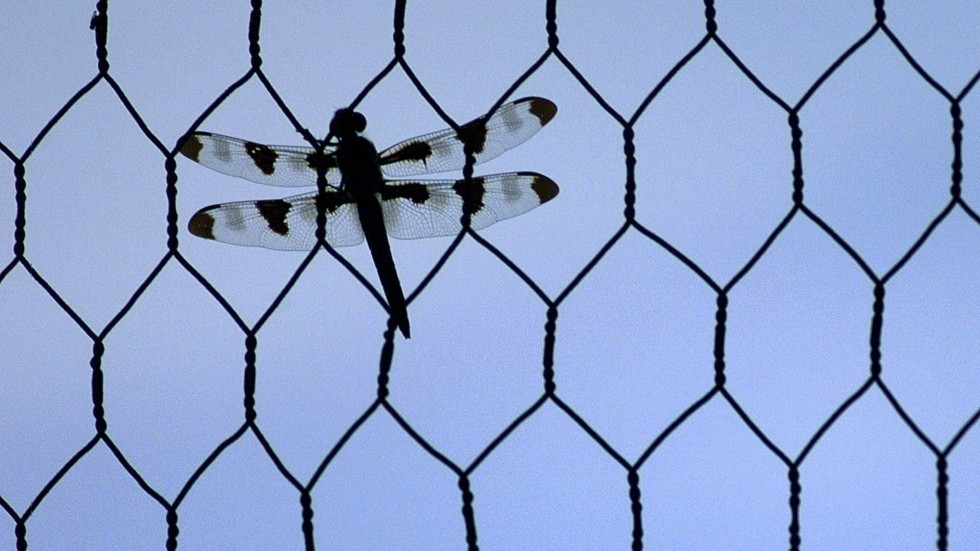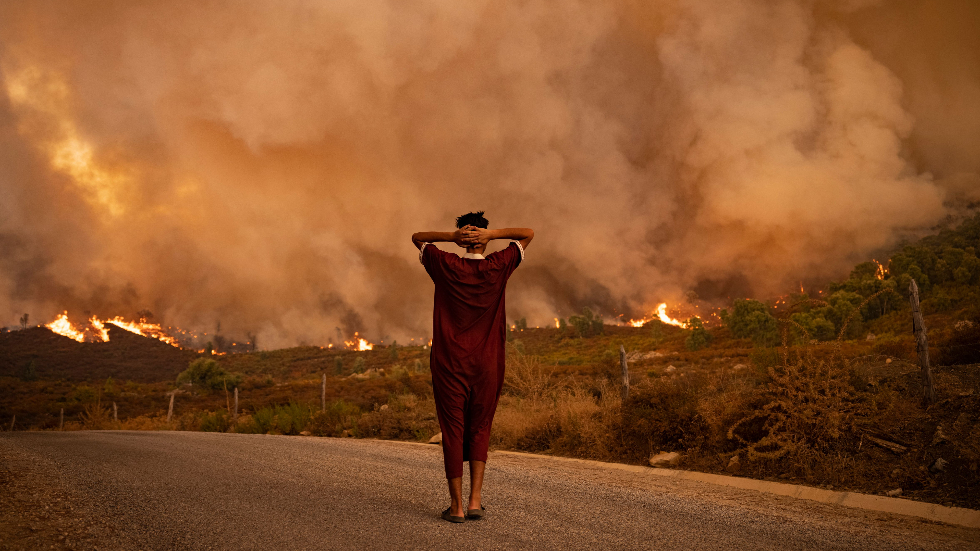Equilibrium/Sustainability — Scientists catch ‘superflare’ in nearby system

Today is Friday. Welcome to Equilibrium, a newsletter that tracks the growing global battle over the future of sustainability. Subscribe here: digital-stage.thehill.com/newsletter-signup.
An eruption of superheated particles in a faraway solar system is a “troubling” sign for us on Earth, according to a recent study from University of Colorado Boulder.
While gazing at the sun-like star EK Draconis, CU astronomers captured the largest-ever “coronal mass ejection,” or solar storm: an event that could “fry satellites in orbit and shut down the power grids serving entire cities” if it hit the Earth head-on.
This isn’t terribly likely, astronomers say — EK Draconis is far younger than our sun, and such events only happen in our solar system every few thousand years.
Nonetheless, “coronal mass ejections can have a serious impact on Earth and human society,” Yuta Notsu of CU Boulder said in a statement. The observation, Notsu added, “may help us to better understand how similar events may have affected Earth and even Mars over billions of years.”
Back on Earth, we’re focusing on more immediate threats. First, we look at how climate and non-climate factors are conspiring to supercharge the extinction crisis in terrestrial wetlands and other ecosystems. Then we look at how climate factors are leading to a greater threat to global security.
For Equilibrium, we are Saul Elbein and Sharon Udasin. Please send tips or comments to Saul at selbein@digital-stage.thehill.com or Sharon at sudasin@digital-stage.thehill.com. Follow us on Twitter: @saul_elbein and @sharonudasin.
Let’s get to it.
40K species at risk of extinction

Land and water mismanagement is putting dragonflies and 40,000 other small but vital freshwater plant and animal species in danger of extinction, according to the Center for Biological Diversity.
The statement draws on a recent study by the International Union for the Conservation of Nature (IUCN), which found that 16-percent of dragon- and damselfly species are at risk of extinction — and highlights the danger to ecosystems from sewage discharge, pesticide misuse and other factors far more immediate than climate change.
First words: Wetland ecosystems around the world “are disappearing three times faster than forests,” Bruno Oberle, IUCN Director General, said in a statement.
“Marshes and other wetlands may seem unproductive and inhospitable to humans, but in fact … they store carbon, give us clean water and food, protect us from floods, as well as offer habitats for one in ten of the world’s known species.”
Rampant destruction: And across the U.S., 85 percent of wetland ecosystems have already been destroyed by “careless planning” that has led to the extinction of wetland creatures like Bachmann’s warbler and the ivory-billed woodpecker — and put wetland species at a thousandfold risk of extinction compared to other plants and animals, according to Center for Biological Diversity
Like what? Few of the species in question are household names, but many serve as key foundations in local ecosystems, whose absence risks causing a broader collapse.
Populations of the rabbitsfoot mussel, for example, a native of the Great Lakes and Ohio River drainage now reduced to about half its range, is in danger from a planned increase in sewage discharge into creeks outside Columbus, Ohio, according to the Center for Biological Diversity.
Then there are insects: Sewage discharge and dams are only one part of the problem: 41 percent of insect species are in danger of extinction due to the conversion of their habitats to agriculture and the accompanying massive rise in water-borne pesticides like glycophosphates and neonicotinoids, according to a 2019 study in Biological Conservation.
How bad is the pesticide problem? Ninety percent of U.S. streams tested by scientists carried pesticides or their toxic byproducts, a 2021 study by the American Chemical Society found — with impacts that that scientists stressed might be higher by a factor of ten “or more.”
“The pesticide industry has conditioned Americans to believe the fiction that these highly toxic pesticides just magically vanish,” Jess Tyler, a scientist at the Center for Biological Diversity, said in a statement about the American Chemical Society study.
CLIMATE AND NON-CLIMATE RISKS ARE CUMULATIVE
These studies highlight a broader point: In wetlands and deserts, climate change is but one component in a far-broader extinction crisis.
Ecologists’ estimates that 15 to 37 percent of plant and animal species will go extinct as a result of climate change are likely far undercounted, according to a University of Arizona study published Wednesday in the journal Ecology Letters.
Why is that an underestimate? Because those estimates missed the complicated additional disruptions caused by those temperature changes. In the case of northern Arizona’s piñon pine forests, some neglected disruptions included the heightened risk of fire, the growing prevalence of bark beetles and the combination of the two operating together, the study found.
This dynamic holds true for wetlands as well, lead study author Emily Schultz said in a statement.
Recounting a friend’s paper about the extinction of the Monte Verde golden toad, Schultz was left with a question: “Was it climate or was it the invasive chytrid fungus that caused frogs worldwide to go through massive die-offs?”
Last words: “The bottom line, for the Monte Verde golden toad, was that it was an interaction between the two,” Schultz concluded. “The extreme drought year they had then reduced the size and number of the pools the frogs were found in. Because they were crowded into smaller pools, they transmitted the fungus more rapidly.”
Climate change is ‘aggravating’ terrorism: UN

Climate change is “a multiplier effect” and “an aggravating factor for instability, conflict and terrorism,” United Nations Secretary-General António Guterres told the U.N. Security Council on Thursday, stressing a need for collective action on global climate security.
First words: “We are in a race against the clock, and no one is safe from the destructive effects of climate disruption,” Guterres said, addressing an open debate on maintaining peace in the context of terrorism and climate change.
Making existing troubles worse: While acknowledging that climate change is by no means “the source of all ills,” Guterres described how the countries most vulnerable to climate change also suffer more from insecurity, poverty, weak governance and terrorism.
Of the 15 countries deemed most vulnerable to climate risks, the U.N. houses a peacekeeping or special political mission in eight of them, Guterres explained, noting that “climate impacts compound conflicts and exacerbate fragility.”
Some countries and regions most prone to the combined impacts of conflict and climate include Somalia, Madagascar, Sudan, the Middle East and North Africa, Guterres said. These regions, he continued, are experiencing droughts and extreme weather events that threaten food security and limit access to scarce resources.
Referring to data on Africa’s Sahel region and the Lake Chad Basin, Moussa Faki Mahamat, chairperson of the African Union Commission, agreed that “the exacerbation of the climate situation with droughts is also exacerbating global tensions because of a scarcity of natural resources.”
Malnutrition coupled with displacement: The global risk of famine and malnutrition could increase by up to 20 percent by 2050, while climate change could lead to the displacement of more than 200 million people during that same period, Guterres added, citing the World Food Program and the World Bank.
Climate disruption makes terrorism “more attractive”: Reduced government capacity to provide public services often “fuels grievances and mistrust towards authorities,” according to Guterres.
“When the loss of livelihoods leaves populations in despair, the promises of protection, income and justice — behind which terrorists sometimes hide their true designs — become more attractive,” he said.
CLIMATE VARIABILITY, POPULATION PRESSURES EXACERBATE TERROR AND CRIME
Where has this trend already taken root? In Iraq and Syria, Gueterres said, ISIS has taken advantage of water shortages to control water infrastructure, and in Somalia, the Al-Shabaab relies on charcoal production for a source of income.
Terrorist groups in Mali are exploiting existing tensions among herders and farmers, while Boko Haram has been able to amass new recruits in the Lake Chad Basin region as local communities become disillusioned by a lack of resources, according to Guterres.
Many young people — who represent 60 percent of the Lake Chad Basin’s population — have turned to criminal activities, as climate variability and population pressure continue to threaten food security, added Mamman Nuhu, executive secretary of the Lake Chad Basin Commission.
An integrated approach to global security: Guterres proposed a five-pronged approach to deepen collective action on the intersection between climate change and violent extremism:
- Address the root causes of insecurity, with the understanding that terrorism does not take place in a vacuum, while reducing inequalities and supporting sustainable development goals.
- Increase investments in climate adaptation and resilience, which are expected to require $300 billion annually by 2030.
- Create better analysis and early warning systems to anticipate the cascading impacts of climate change.
- Develop partnerships that link local, regional and national approaches and make use of on-the-ground expertise.
- Ensure that sustained investment is available, as peace missions today “have limited room to maneuver.”
Last words: “We must address these challenges in an integrated manner and create a virtuous circle of peace, resilience and sustainable development,” Guterres said.
Follow-up Friday

Another look at issues we’ve explored throughout the week.
Navy identifies second groundwater contamination site near Pearl Harbor base
- The Navy has identified alarming levels of petroleum contamination in a second groundwater source at Joint Base Pearl Harbor-Hickam in Hawaii, which follows up on an initial leak that had sickened many families nearby.
- But despite reporting the contamination on Wednesday, the Navy said on Thursday that the samples did not come directly from its Aiea-Halawa well, without specifying its actual origins, according to CNN. The Aiea Halawa Shaft has been offline since Friday, five days after the Navy shut down the first site, the Red Hill Shaft.
‘Charging deserts’ in Black, Latino neighborhoods; metal mines face ‘talent crunch’
- We explored on Monday how the Securities and Exchange Commission is investigating electric vehicle (EV) companies to separate hype from fraud. On Thursday, The Washington Post looked at another issue plaguing the EV industry: the notion that a lack of charging infrastructure — known as “charging deserts” — in Black and Latino neighborhoods may exclude these communities from participating in the EV era and leave them subject to disproportionate amounts of air pollution exposure.
- The rise of EV faces a variety of roadblocks, like a “talent crunch” in the mining industry, Reuters reported. Despite the fact that EVs and renewable energy technologies depend on mines for metals like lithium, nickel and copper, fewer graduates have the skills necessary to build and operate those mines, according to Reuters.
20 years is enough time to regrow a degraded tropical rainforest: study
- On Tuesday we looked at some of the shortcomings of tree planting programs. But a study published in Science on Thursday suggests that planting is often unnecessary. Tropical forests left alone for just 20 years can reach 78 percent of their original old-growth density — making so-called “natural regeneration” even more effective than tree-planting, the study found.
- Twenty years is “a realistic time that I can think of, and that my daughter can think of, and that the policymakers can think of,” lead author Lourens Poorter, professor in functional ecology at Wageningen University in the Netherlands, told The Guardian.
That’s it for today. Please visit The Hill’s sustainability section online for the web version of this newsletter and more stories. We’ll see you Monday.
Copyright 2023 Nexstar Media Inc. All rights reserved. This material may not be published, broadcast, rewritten, or redistributed. Regular the hill posts










